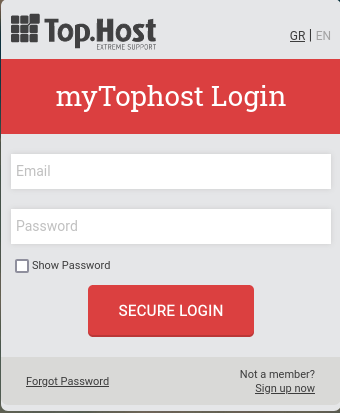Customer Support
How can I install Drupal through Plesk?
In case you want to install Drupal through Plesk, follow the steps described below.
1. Login to myTophost Panel and from there select "Plesk Login" to login to the Plesk of the package you are interested in.


2. Select Applications

3. Select All available applications and in the search, type drupal and Search. Finally, once it shows you the search result, select Install(Custom) to install the app.

4. Read and accept by checking acceptance of the terms of use and Next

1. Select Automatically update this app when updates are available if you want Drupal to update automatically when it is available.
ATTENTION : In case of automatic update, there may be incompatibility with plugins / themes and therefore a malfunction on your site, so we recommend you not to select it, after all, Plesk informs you whenever an update is available.
2. In Administrative Access, you choose whether you want to log into Drupal administration with the credentials you have for Plesk or create new credentials from there.
6. In the Main configuration category during Plesk installation, it automatically declares some fields. Modify them as you want and to complete the installation, select Install.

NOTE: Through automatic installation, Plesk creates the database and configuration file, so you don't need to do anything extra.
You haven't found what you are looking for?
Contact our experts, they will be happy to help!
Contact us